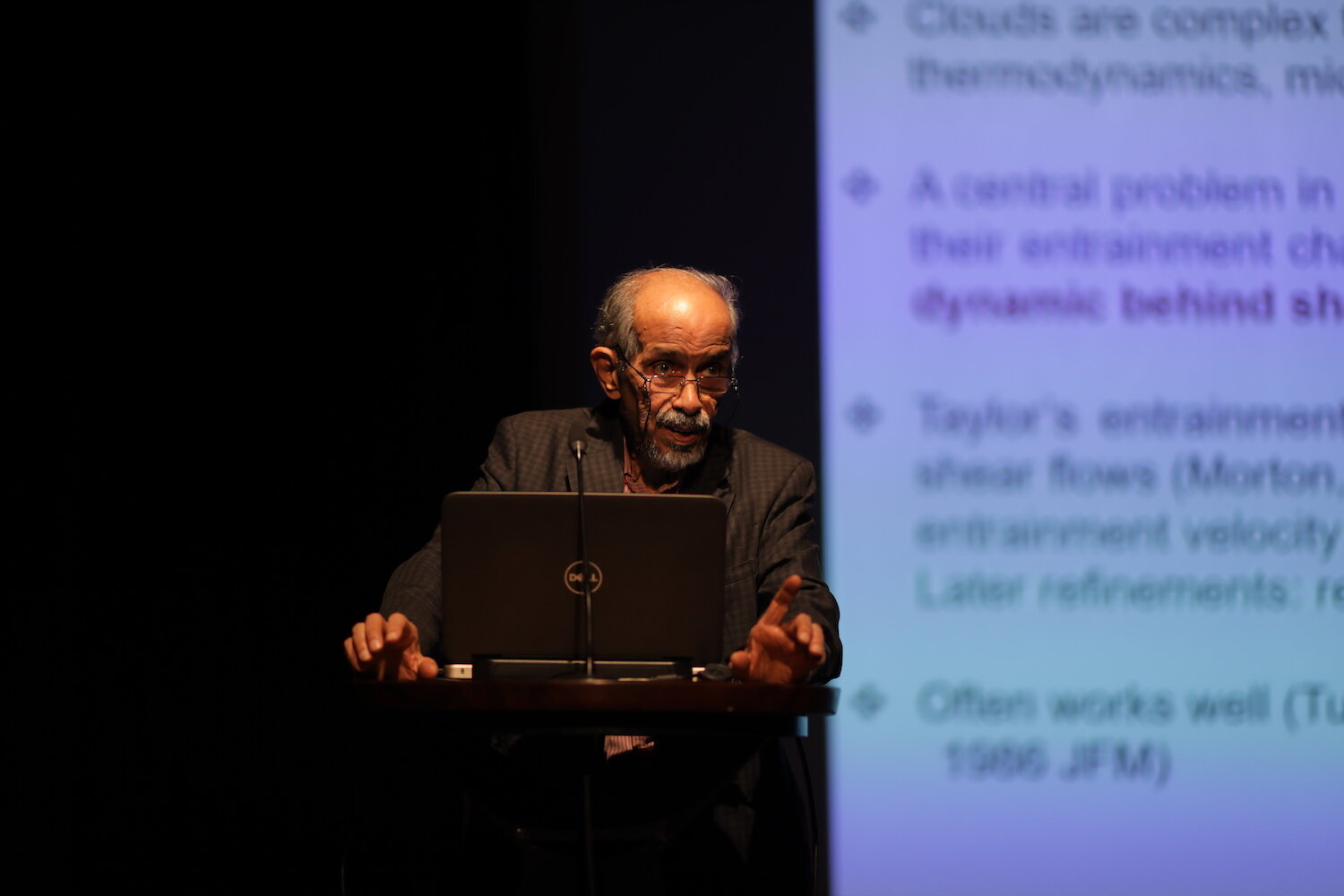Cloudy Matters
On 30th January as a part of its lecture series Confluence, Science Gallery Bengaluru played host to Roddam Narasimha from Jawaharlal Nehru Centre for Advanced Scientific Research (JNCASR). He was invited to talk about his work with Cummulus clouds.
Cummulus clouds are those clouds which have a flat base but are large and fluffy. They are quite commonly captured in photographs or depicted in landscape paintings, lending an idyllic look to any sky.
Narasimha has studied clouds and cloud patterns all his life. His area of research is in fluid dynamics and he was awarded the Padma Vibhushan in 2013 for a lifetime of work in understanding clouds and the Monsoon. He begins by talking about his fascination with clouds, which began at an early age; back when the Bangalore skyline wasn’t cluttered with high-rise buildings and one could trace the movements of clouds.
A firm believer in the transdisciplinary nature of knowledge, he shows us examples from classical Indian literature and art such Kalidasa’s Meghadoota, of how clouds are woven into our imaginations of life, love, sorrow and change. He then proceeds to share beautiful pictures of clouds of various shapes and sizes captured all over the world, and we could see why this subject was fascinating. The first of the half the talk comes to a close with an excerpt from an excerpt from P.B. Shelley’s The Cloud, which is often interpreted as a poetic autobiography of a cloud.
Being a scientist, Narasimha used the second half in giving the audience a flavor of scientific rigour and the extent of details involved in such work. Like all fluid dynamics, the study of clouds begins with the Navier-Stokes equation, an equation so complicated that the existence of exact solutions has not been proved in over two centuries. There are approximate solutions however and these are what Narasimha referred to as he weaved his way through dense mathematical formulas to tell us what is known about these clouds and how they can be created artificially on a computer and in a lab. He left us with pictures of these artificial clouds as we marvelled at their realistic appearance. We came away with the realization that the one of the most effervescent and shape shifting components of Nature could now be recreated in a laboratory.
By Nomaan, Mediator

